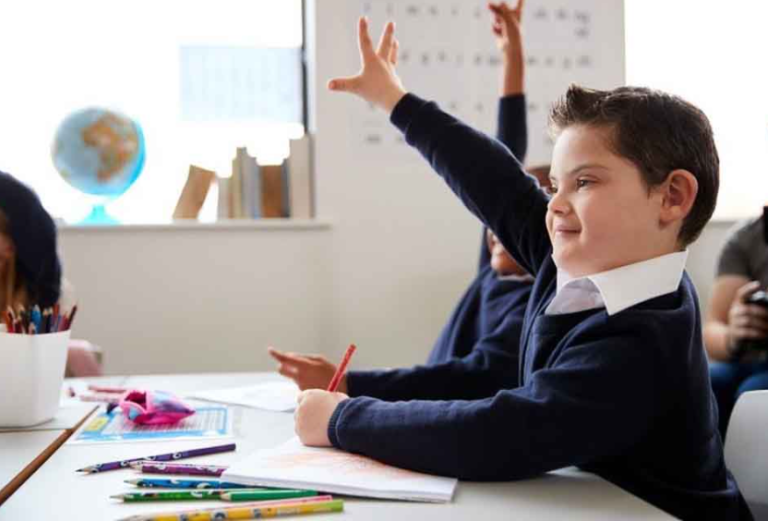Understanding Different Learning Styles for Better Teaching
Introduction to Learning Styles
In today’s dynamic educational environment, understanding how students learn is vital for effective teaching. The concept of learning styles refers to the preferred ways individuals absorb, process, and retain information. Recognizing these preferences allows teachers to tailor their instructional methods, making learning more engaging and efficient for every student. This article explores different learning styles and provides practical strategies for educators to improve their teaching.
The Importance of Recognizing Learning Styles in Education
Every student is unique, bringing a diverse range of learning preferences to the classroom. When educators recognize and adapt to these styles, it leads to better student motivation, increased participation, and improved academic performance. Ignoring learning preferences can result in disengagement and frustration, particularly for students who do not thrive under conventional teaching methods.
Overview of Major Learning Styles Models
Several models exist to classify learning styles, each offering a unique perspective on how individuals best process information.
VARK Model: Visual, Auditory, Reading/Writing, Kinesthetic
The VARK model categorizes learners into four main types:
- Visual: Learn best through images, charts, and spatial understanding.
- Auditory: Prefer listening to lectures and discussions.
- Reading/Writing: Learn effectively through text-based input and output.
- Kinesthetic: Learn best through hands-on activities and movement.
See also: Strategies to Improve Student Engagement and Motivation
Gardner’s Multiple Intelligences Theory
Howard Gardner proposed that intelligence is not a single factor but multiple intelligences, including linguistic, logical-mathematical, musical, bodily-kinesthetic, interpersonal, intrapersonal, naturalistic, and spatial intelligences.
Kolb’s Experiential Learning Cycle
David Kolb described learning as a cyclical process involving concrete experience, reflective observation, abstract conceptualization, and active experimentation, emphasizing learning through doing and reflecting.
Visual Learning Style Explained
Characteristics of Visual Learners
Visual learners understand and remember information better when it is presented in images, diagrams, graphs, or charts. They often think in pictures and benefit from color-coded notes and visual aids.
Teaching Strategies for Visual Learners
To support visual learners, teachers should incorporate multimedia presentations, infographics, mind maps, and handouts with visuals. Using visual organizers and encouraging students to draw or sketch concepts also helps solidify learning.
Auditory Learning Style Explained
Characteristics of Auditory Learners
Auditory learners retain information best through listening. They excel in lectures, discussions, and verbal explanations and often remember spoken instructions better than written ones.
Teaching Strategies for Auditory Learners
Instructors can enhance learning by including group discussions, storytelling, read-aloud sessions, and audio recordings. Repeating key points aloud and using rhymes or mnemonic devices also benefit auditory learners.
Reading/Writing Learning Style Explained
Characteristics of Reading/Writing Learners
These learners prefer information displayed as words. They absorb material best through reading textbooks, writing notes, and using lists and handouts.
Teaching Strategies for Reading/Writing Learners
Encourage detailed note-taking, provide reading assignments, and use written quizzes. Offering study guides, handouts, and opportunities for essay writing will support this group effectively.
Kinesthetic Learning Style Explained
Characteristics of Kinesthetic Learners
Kinesthetic learners learn through physical activity, hands-on experience, and movement. They often struggle with passive learning and need to engage their bodies to process information.
Teaching Strategies for Kinesthetic Learners
Incorporate lab experiments, role-playing, field trips, and interactive simulations. Allowing breaks for movement and using manipulatives in lessons can significantly improve their engagement and retention.
Benefits of Adapting Teaching Methods to Learning Styles
Adapting teaching styles to accommodate learning preferences can lead to numerous benefits, including improved student confidence, higher motivation, better information retention, and enhanced critical thinking skills. This approach fosters a more inclusive learning environment that addresses individual needs.
Challenges and Criticisms of Learning Styles Theory
While many educators find learning styles helpful, some researchers criticize the lack of empirical evidence supporting the idea that teaching strictly according to learning styles improves learning outcomes. Additionally, overemphasis on learning styles may pigeonhole students or limit exposure to diverse learning methods.
Practical Tips for Teachers to Identify and Support Different Learners
Using Assessments and Observations
Teachers can use questionnaires, learning style inventories, and direct classroom observations to identify students’ preferences. These tools help create a more personalized learning experience.
Creating a Flexible and Inclusive Classroom
Offering varied activities and multiple ways to access content ensures all students have opportunities to learn in ways that suit them best. Flexibility in assessments and assignments also supports diverse learners.
The Role of Technology in Supporting Diverse Learning Styles
Technology offers powerful tools to cater to different learning styles. For example, videos and animations aid visual learners, podcasts and audiobooks assist auditory learners, e-books and online texts benefit reading/writing learners, and interactive apps help kinesthetic learners engage physically with content.
Case Studies: Success Stories in Adapting to Learning Styles
Schools that have implemented differentiated instruction based on learning styles report higher student satisfaction and improved academic results. For instance, one middle school integrated multimedia and hands-on projects, resulting in a significant boost in test scores and classroom participation.
Frequently Asked Questions (FAQs)
What are learning styles, and why do they matter?
Learning styles are preferred methods by which individuals absorb and process information. Recognizing them helps tailor instruction for better engagement and understanding.
Can students have more than one learning style?
Yes, many students exhibit a combination of learning styles rather than a single dominant preference.
How can teachers assess students’ learning styles?
Teachers can use questionnaires, observations, and discussions to gauge learning preferences.
Are learning styles scientifically proven?
While learning styles theory is widely accepted in education, research shows mixed evidence about the effectiveness of teaching strictly according to learning styles.
How can technology enhance learning for different styles?
Technology offers diverse tools such as videos, podcasts, interactive simulations, and digital texts that cater to various learning preferences.
What if a teaching style doesn’t match a student’s learning style?
Exposing students to multiple teaching styles helps develop flexible learning strategies and supports overall cognitive growth.
Conclusion: Embracing Learning Styles for Effective Teaching
Understanding different learning styles equips educators with the insight to create more engaging, inclusive, and effective learning environments. While it’s essential to remain flexible and avoid rigid categorizations, using learning styles as a guide helps teachers meet diverse student needs, fostering greater academic success and lifelong learning.


